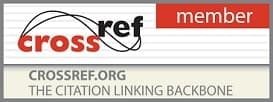2018, Vol. 2 Issue 2, Part A
A study of 30 cases of scoliosis: Two stage correction
Author(s): Dr. Mitul Mistry, Dr. Manish Shah, Dr. Santosh Hingu and Dr. Aditya Dabhi
Abstract: Introduction: Scoliosis is the lateral curvature of spine. It produces body disfigurement and when the deformity is extreme it displace and compress the viscera and also compromises their function. Thereby it may reduce the life expectancy and sometimes produces psychological trauma to the patient. This retrospective and prospective study was carried out in selected group of patients treated for scoliosis in our institute since last 6 years from April 2011 to march 2017.
Methods and Materials: In our institute we had operated more than 100 cases of scoliosis, however minority of patients were treated by anterior release and fusion and second stage posterior surgery. We could get complete follow up of 30 cases of adolescent idiopathic scoliosis and congenital scoliosis which were operated both anterior and posteriorly. All these patients were included in the study. The patients were followed up after discharge at every 6 weeks initially upto fusion and then yearly and before final preparation of this study they were called for the final follow up and the latest status was documented. We used SRS questionnaire – 24 for pre and post-operative status along with other criteria.
Results: Patients in congenital scoliosis presents in the age group of 1-5 years. Patients from 6-10 years usually present for neurological problems and 11-15 years present for onset of acquired idiopathic scoliosis. 15-20 years usually present due to deformity in pre-marital period. In vast majority of patients the chief complain was deformity. Very minor (4/30) number of patients had symptoms of weakness in extremities due to residual poliomyelitis. In our study 3 patients were of the age group 0-10 years, 15 in 11-15 years and 12 patients were belonging to the age group of 15-20 years. Of the 30 patients, 9 were male and 21 were female.
Discussion: Among progressive flexible idiopathic scoliosis curve ranges commonly between 30-75 degrees and with SRS type 2 and 3. In our set up we were able to achieve anterior and posterior arthrodesis with correction of deformity upto 55% in Harrington rod instrumentation and 70% in segmental instrumentation system at immediate post-operative which acts as a boon for most of our patients with idiopathic scoliosis. 5-10% correction was lost at final follow up more in Harrington group when operated for lumbar or high degree of thoracolumbar curves.
Conclusion: Short term good results and reasonable non neurological complication rate in comparison to international series of standard Harrington instrumentation system with our series of 30 patients of two stage correction encourage for further continuation of this complex spine deformity corrective surgery with anticipations to improve from our mistakes, further refinements in surgical technique, longer follow up results, surgeon and patient friendly instrumentation system with final goal of achieving rapid sound anterior and posterior arthrodesis.
Pages: 04-07 | 1453 Views 123 Downloads
How to cite this article:
Dr. Mitul Mistry, Dr. Manish Shah, Dr. Santosh Hingu, Dr. Aditya Dabhi. A study of 30 cases of scoliosis: Two stage correction. Nat J Clin Orthop 2018;2(2):04-07 DOI: https://doi.org/10.33545/orthor.2018.v2.i2a.38






